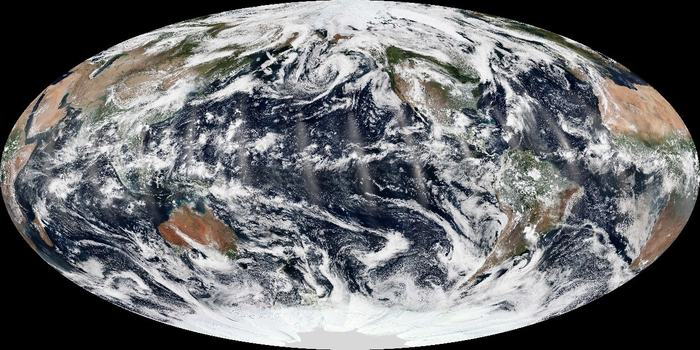A well-known phenomenon in the atmospheric sciences that challenges the classical baroclinic instability theory of cyclone development is midwinter suppression. That is, the North Pacific storm-track activity has a minimum in midwinter, despite the surface baroclinicity being at its highest. This anomalous phenomenon is most pronounced in the upper troposphere and almost absent in the lower troposphere, and the difference can be fundamentally traced back to an inherent inconsistency between the upper- and lower-level eddy growth. Although a series of advances have been made in the study of midwinter suppression over the past few decades, little attention has been paid to the different roles played by the upper- and lower-level eddies. Focusing on the discrepancies in the growth properties of upper- and lower-level eddies is not only the key to understanding the baroclinic processes that dominate the dynamics of the midlatitude climate, but also helps to improve future predictions of weather variability. In addition, focusing directly on the eddy growth process is more in line with the physical meaning of baroclinicity and has been rarely mentioned in the past.

Credit: NASA / Publicity, https://www.nasa.gov/sites/default/files/globe_vir_2013251_lg.jpg
A well-known phenomenon in the atmospheric sciences that challenges the classical baroclinic instability theory of cyclone development is midwinter suppression. That is, the North Pacific storm-track activity has a minimum in midwinter, despite the surface baroclinicity being at its highest. This anomalous phenomenon is most pronounced in the upper troposphere and almost absent in the lower troposphere, and the difference can be fundamentally traced back to an inherent inconsistency between the upper- and lower-level eddy growth. Although a series of advances have been made in the study of midwinter suppression over the past few decades, little attention has been paid to the different roles played by the upper- and lower-level eddies. Focusing on the discrepancies in the growth properties of upper- and lower-level eddies is not only the key to understanding the baroclinic processes that dominate the dynamics of the midlatitude climate, but also helps to improve future predictions of weather variability. In addition, focusing directly on the eddy growth process is more in line with the physical meaning of baroclinicity and has been rarely mentioned in the past.
To this end, Chenming Ma and Prof. Ming Bao from the School of Atmospheric Sciences, Nanjing University, China, used a Lagrangian cyclone tracking algorithm to compare the different behaviors of the upper- and lower-level eddies from the perspective of eddy generation and growth. “This approach will serve to re-examine the midwinter suppression from the perspective of baroclinic development and further clarify which characteristics of the upper- and lower-level eddies are responsible for the inconsistency of midwinter suppression between the upper and lower troposphere,” says Chenming Ma, the corresponding author of the study. The findings have been recently published in Atmospheric and Oceanic Science Letters.
The results show that the behavior of lower-level eddies in the North Pacific remains within the applicability of the baroclinic instability, while that of the upper-level eddies is more complex. Although the enhanced Pacific jet promotes the generation and development of upper-level eddies on the northeast side of the jet core, it also increasingly suppresses their generation on the northwest side. A more interesting conclusion was obtained by carefully examining the growth process of upper-level eddies; that is, the growth of upper-level eddies generated in the Northwest Pacific is suppressed throughout the cold season, while those generated near the jet exit can grow normally and eventually develop into the main body of the upper storm track.
“The close relations between the upper-level eddies and jet deserve further study and have potential implications for further revealing the important role played by the jet in the midwinter suppression,” adds Chenming Ma. “At the same time, how to explain the discrepancy from the perspective of the vertical coupling of eddies is another subject for us to investigate”.
Journal
Atmospheric and Oceanic Science Letters
DOI
10.1016/j.aosl.2022.100272
Article Title
Different response of North Pacific storm tracks in the upper and lower troposphere to jet strength
Article Publication Date
10-Aug-2022




